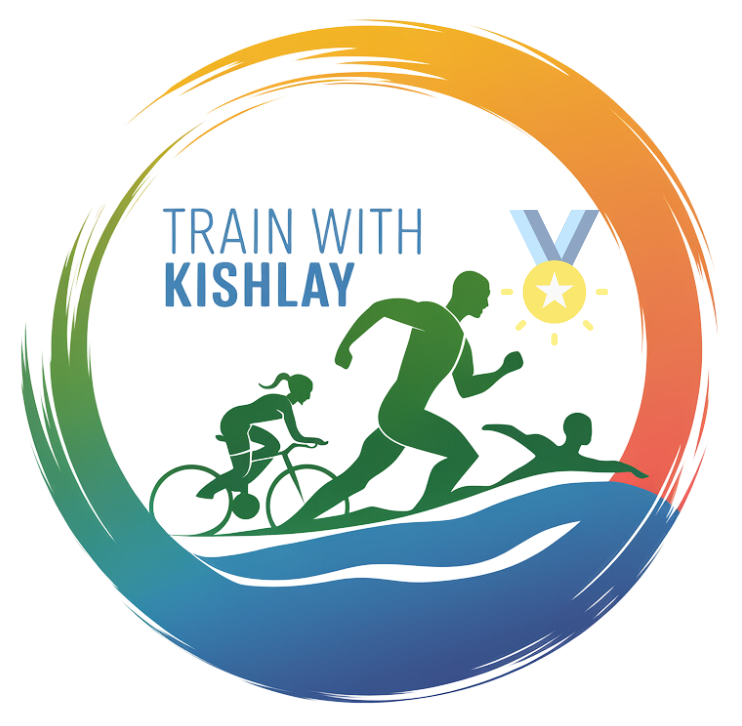Key Science-Based Strategies:
1. Aerobic Power Development
Long runs stimulate adaptations in slow-twitch muscle fibers and enhance mitochondrial density for better oxygen utilization.
Zone 2 training builds your aerobic base, enabling you to maintain a steady pace for the race’s duration.
2. Fueling Strategy
Marathon runners burn approximately 60-90 grams of carbohydrates per hour, and training includes fueling simulations to teach your body to process carbs efficiently.
3. Biomechanical Efficiency
Optimize stride length and cadence to reduce energy waste.
Learn efficient upper body positioning and arm swing to conserve energy over long distances.
4. Pacing Techniques
Develop race-day pacing strategies based on heart rate, effort zones, and course profiles to avoid “hitting the wall.”
Half Marathon: The Speed-Endurance Challenge
The 21.1 km (13.1 miles) Half Marathon is a balance of speed and endurance, requiring precise pacing and efficient biomechanics.
Key Science-Based Strategies:
1. Lactate Threshold Training
Incorporate tempo runs to improve the body’s ability to clear lactate, enabling you to sustain faster speeds without fatiguing.
2. VO2 Max Development
High-intensity interval training improves your maximum oxygen uptake, boosting your ability to sustain near-threshold efforts.
3. Running Economy
Focus on drills that improve ground contact time and leg turnover for efficient energy use during the race.
4. Recovery Optimization
Structured recovery days and mobility exercises reduce the risk of overtraining and ensure consistent progress.
Ultra-Running: The Extreme Endurance Test
Ultra-running includes races beyond the Marathon distance, typically starting at 50 km (31.1 miles) and extending to 100 miles or more. These events challenge not just your body but your mental resilience.
Key Science-Based Strategies:
1. Metabolic Flexibility
Teach your body to switch between carbs and fat as fuel sources through long, low-intensity runs and fasted training sessions.
2. Mental Training
Develop mental resilience with visualization, goal-setting, and strategies for managing fatigue during long hours of running.
3. Adaptive Load Training
Use back-to-back long runs to simulate race-day fatigue while progressively increasing volume.
Train on trail terrain to build balance, strength, and familiarity with uneven surfaces.
4. Nutrition for Ultras
Practice eating on the run to sustain energy for races lasting over 12 hours. Learn to manage electrolyte balance and prevent dehydration.
Technical Aspects Common to All Distances
1. Heart Rate Training Zones
Training is optimized using HR zones:
Zone 2 for building endurance.
Zone 4 for improving lactate threshold.
Regular heart rate monitoring ensures you train within safe and effective intensity levels.
2. Stride and Cadence Optimization
Improve running cadence (typically around 180 steps per minute) to enhance efficiency and reduce injury risk.
Optimize stride length for energy conservation without compromising speed.
3. Injury Prevention
Strength Training: Focus on core, glutes, and legs to prevent common injuries like shin splints or IT band syndrome.
Prehabilitation Routines: Address muscle imbalances before they lead to injuries.
4. Recovery Science
Incorporate active recovery, foam rolling, and mobility drills to reduce stiffness and promote circulation.
Monitor recovery using HR variability and subjective measures to prevent overtraining.
5. Sports Nutrition
Implement a balanced diet tailored to your training load, focusing on macronutrient timing and hydration.
Develop race-day nutrition strategies to avoid bonking and maintain performance.
Why You Need a Science-Based Coach
At Train With Kishlay, we combine cutting-edge exercise science with personalized coaching to help every runner reach their potential. Here’s what sets us apart:
Data-Driven Plans: Workouts are tailored to your unique physiology, fitness level, and goals, ensuring optimal progress.
Injury-Free Training: Periodized plans balance stress and recovery, keeping you healthy and consistent.
Race-Specific Strategies: Get race-day plans built for your target event, including pacing, fueling, and mental preparation.
Holistic Approach: We integrate technical mastery, strength training, nutrition, and recovery into a single, cohesive plan.
Ready to Transform Your Running?
Whether you’re preparing for your first Marathon, breaking a personal record, or tackling the challenges of Ultra-Running, Train With Kishlay is here to guide you every step of the way.
Contact us today to start your journey with a science-backed approach to endurance excellence.
